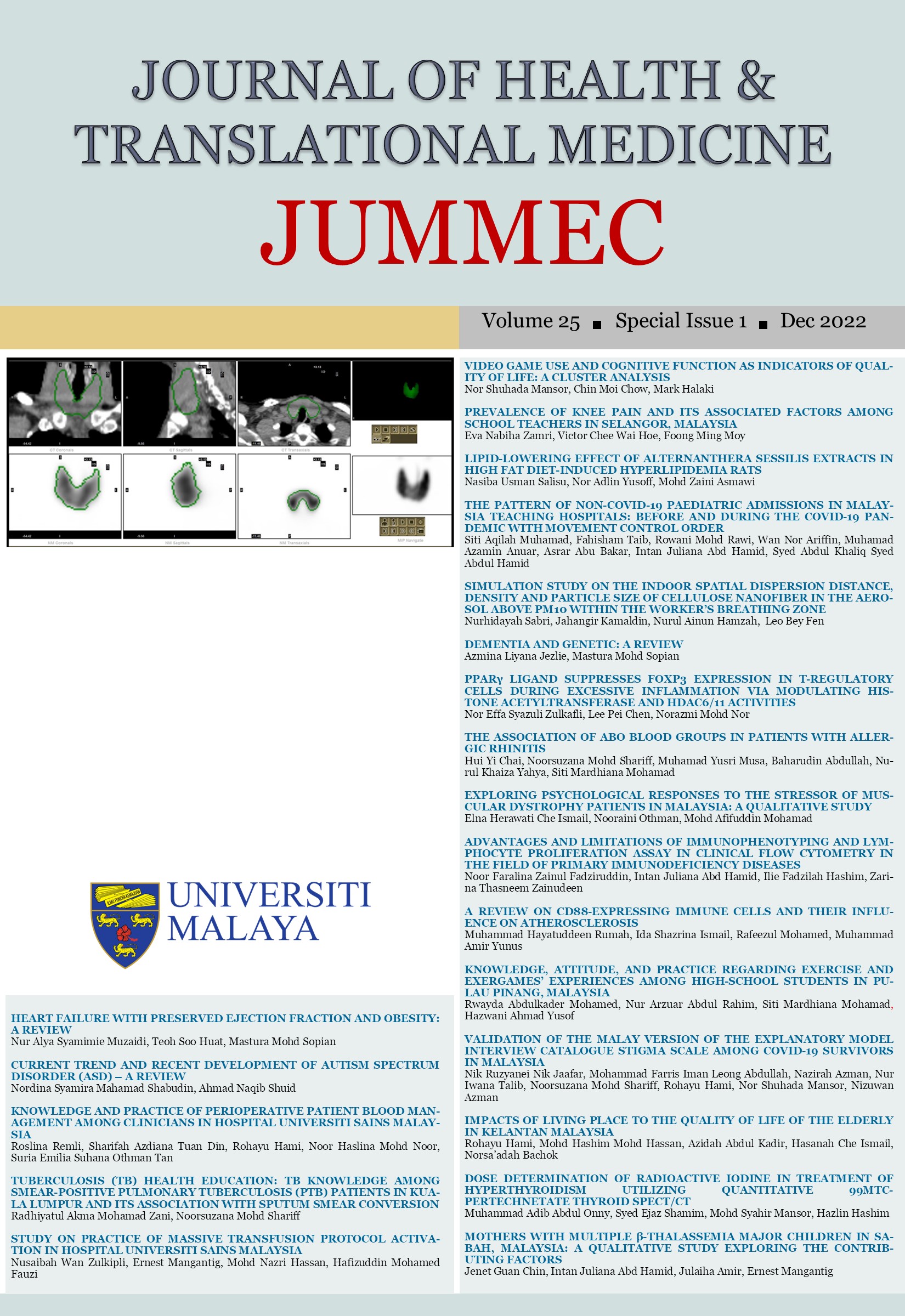KNOWLEDGE AND PRACTICE OF PERIOPERATIVE PATIENT BLOOD MANAGEMENT AMONG CLINICIANS IN HOSPITAL UNIVERSITI SAINS MALAYSIA
Received 2022-02-15; Accepted 2022-09-11; Published 2022-12-31
DOI:
https://doi.org/10.22452/jummec.sp2022no1.19Abstract
Perioperative Patient Blood Management is part of the patient blood management (PBM) program specifically focused on surgical patients. Even though this concept had been introduced in 2010 by World Blood Organization (WHO), earlier studies in Europe had shown poor knowledge and practice among clinicians in this area. In Malaysia, PBM approach is still not comprehensive, and there was no published data to relate this problem with clinicians’ lack of knowledge and practice. Therefore, our main objective was to study the knowledge and practice of PBM among clinicians mainly involved in the perioperative field at Hospital Universiti Sains Malaysia (Hospital USM), Kelantan. A cross-sectional study was done from 1st December 2019 to 31st October 2020 using a structured and validated questionnaire containing 41 items. Logistic regression was used to evaluate the association between socio-demographic variables with knowledge level. A total of 252 participants were involved in this study. About 61.5% of the clinicians had a poor knowledge level. Poor knowledge level among clinicians was significantly associated with clinicians' age, primary field, previous knowledge about PBM, and PBM course attendance (p<0.05). The practice was at a moderate level. Overall, there were significant knowledge gaps and inadequate practice of PBM in perioperative patients among clinicians in Hospital USM. These results might guide the local clinical division to formulate more constructive and effective training strategies to strengthen the clinicians’ knowledge and practice of PBM in perioperative patients.
Downloads
Downloads
Published
Issue
Section
License
All authors agree that the article, if editorially accepted for publication, shall be licensed under the Creative Commons Attribution License 4.0 to allow others to freely access, copy and use research provided the author is correctly attributed, unless otherwise stated. All articles are available online without charge or other barriers to access. However, anyone wishing to reproduce large quantities of an article (250+) should inform the publisher. Any opinion expressed in the articles are those of the authors and do not reflect that of the University of Malaya, 50603 Kuala Lumpur, Malaysia.


